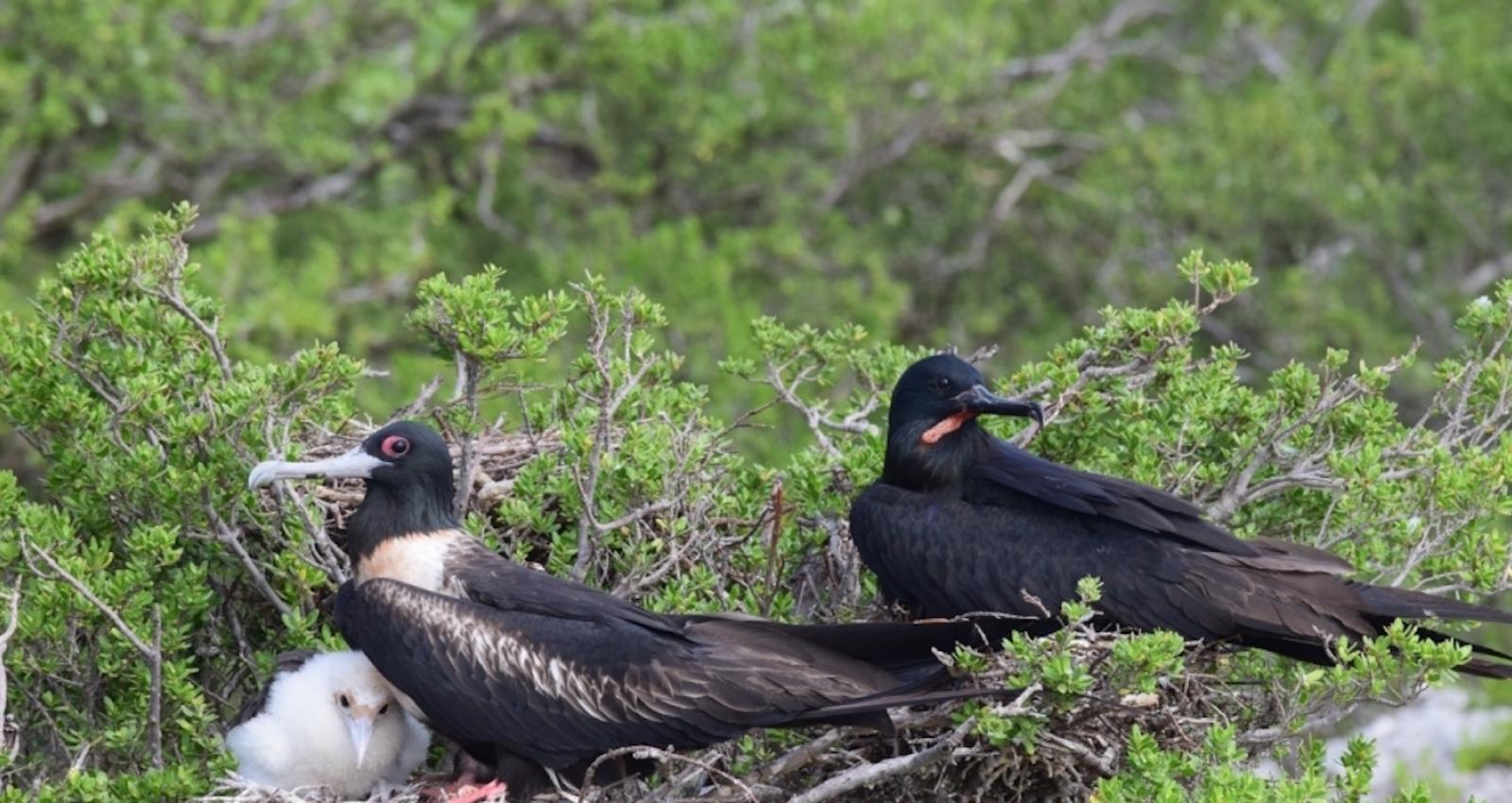The emblematic Frigatebird, Otaha in Tahitian is highly symbolic in Polynesian culture, so much so that it is visible in Tetiaroa Society's logo as well as above the atoll.
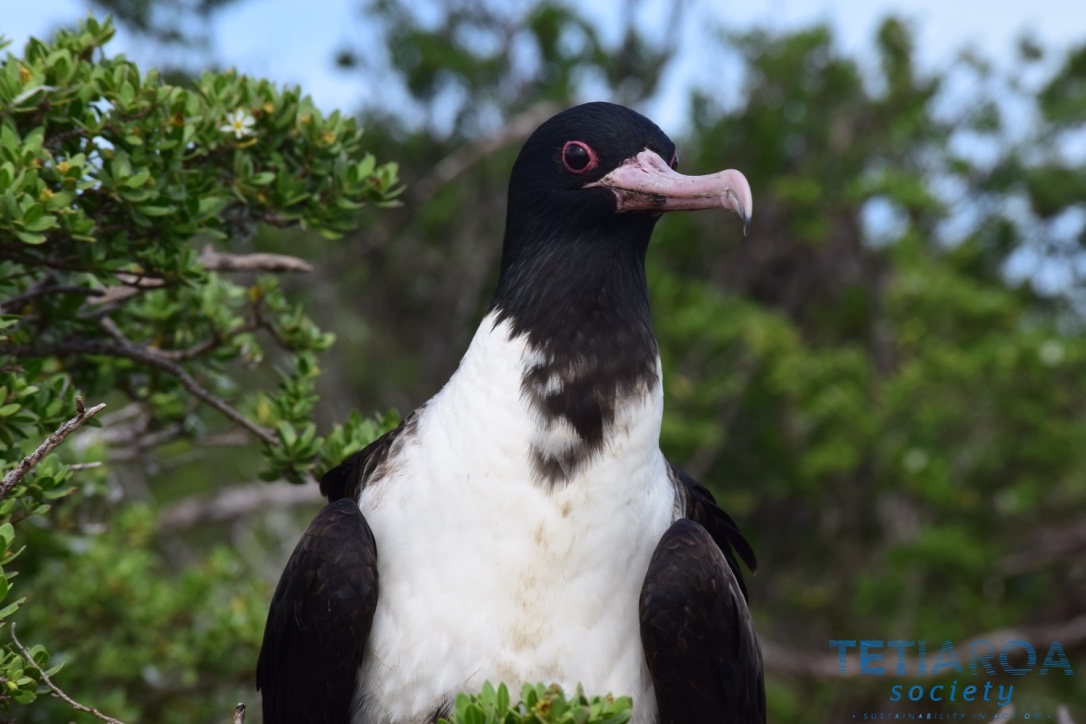
Frigate on Tetiaroa
This man-of-war, is the manifestation of a powerful Polynesian god Oro, god of Fertility and War. This ferocious predator is often opportunistic and steals other birds' prey. You should see it chasing tirelessly after red-footed boobies until the booby either regurgitates or drops its fish.
There are two species of Otaha present in Tetiaroa (out of five in the world): the Great Frigatebird and the Lesser Frigatebird. The best known is the first one which is very impressive in size, females can measure up to 7.5 foot wingspan, recognizable by its white collar on the neck and the red circle around its eye. You will hardly see any bigger seabird in open ocean than this one. Males are predominantly black and have a scarlet gular pouch they inflate during displays, and the beautiful green sheen on the upper-parts of their scapular feathers.
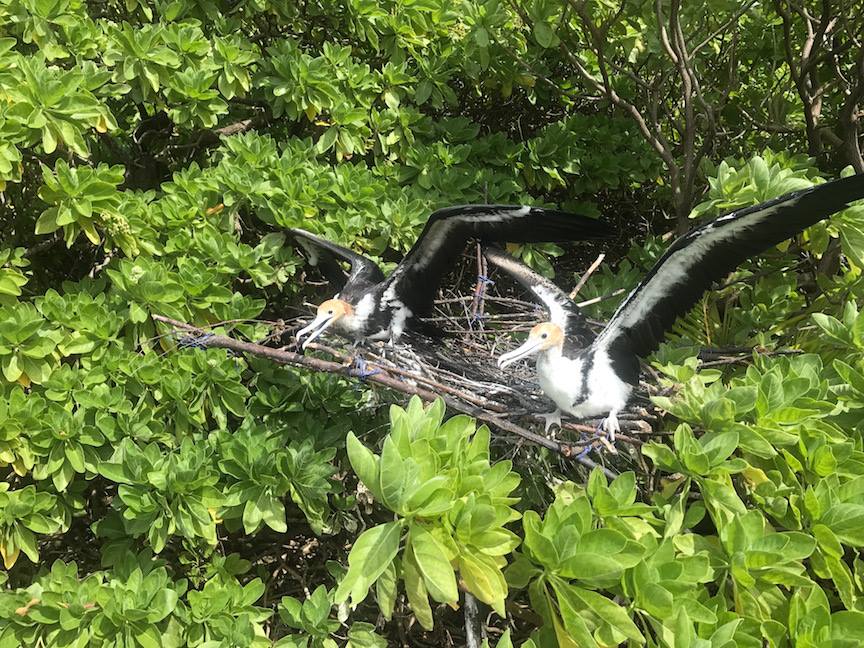
juvenile lesser frigates
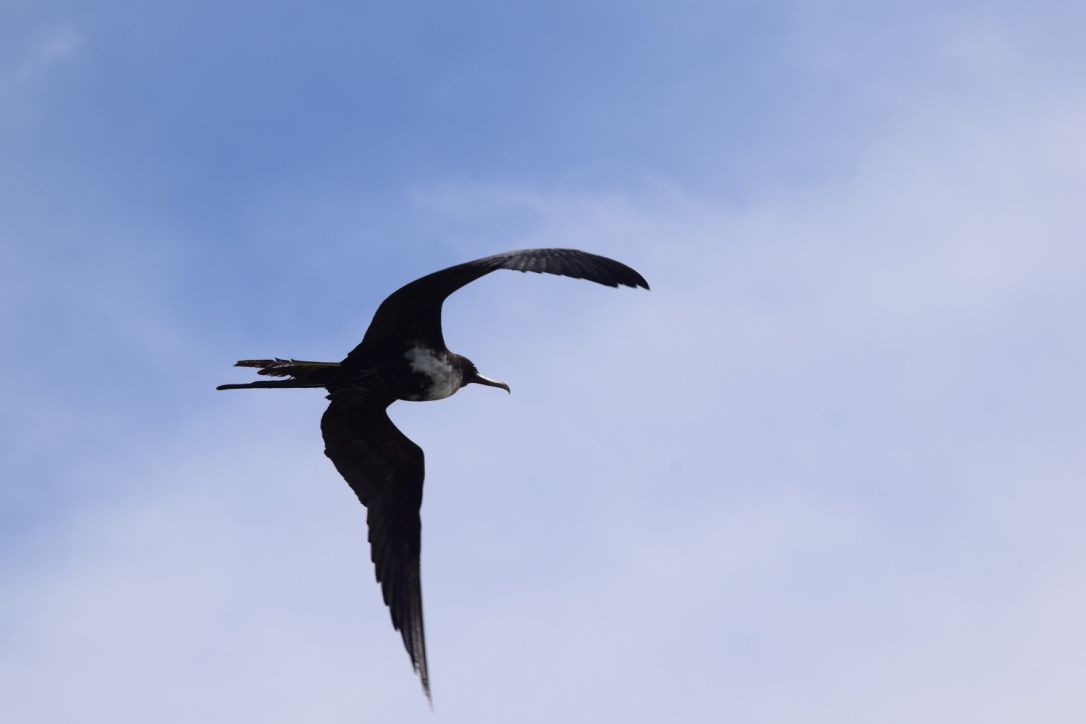
This bird has the largest wing-area-to-body-weight ratio, it is shaped for soaring (ex: the weight of its total skeleton is 5% to total body mass, half of its body weight is from its feathers and muscles). It can stay on the wing up to 12 days. When you search for it in the sky, look for a kite with a 'W' silhouette with angular pointy wings. You will never see it landing on the surface of the water because, as opposed to most of the seabirds, they produced very little oil from uropygial glands which makes them vulnerable in the water. It wouldn't be able to take off with sodden feathers from the water level.
In fact Frigatebirds don't dive in the water, rather snatch small fishes such as flying fish or even squid from the surface of the water using its strong hooked bill. They take advantage of bait balls occuring in open ocean - small fishes swarm and pushed up to the surface threatened by predators underneath like tunas, dolphins, swordfish.
Fishermen usually catch sight of Frigatebirds taking part in the feast as well. They also have a less glorious way to obtain food - just stealing it from other birds. Raiding for food from other birds is thought to be mostly a way of supplementing than their main feeding technique. They are thought to forage in a range of around forty-seven miles from coasts in French Polynesia, obviously they are not forced to go very far to find food in our waters.
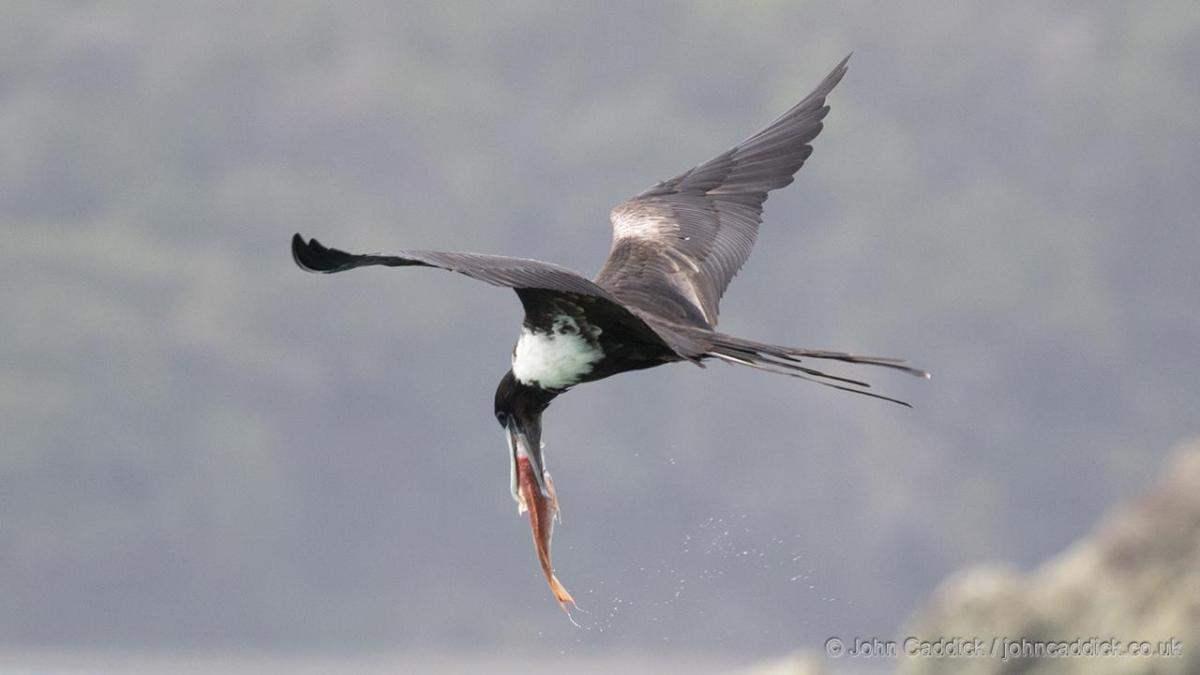
fishing frigate
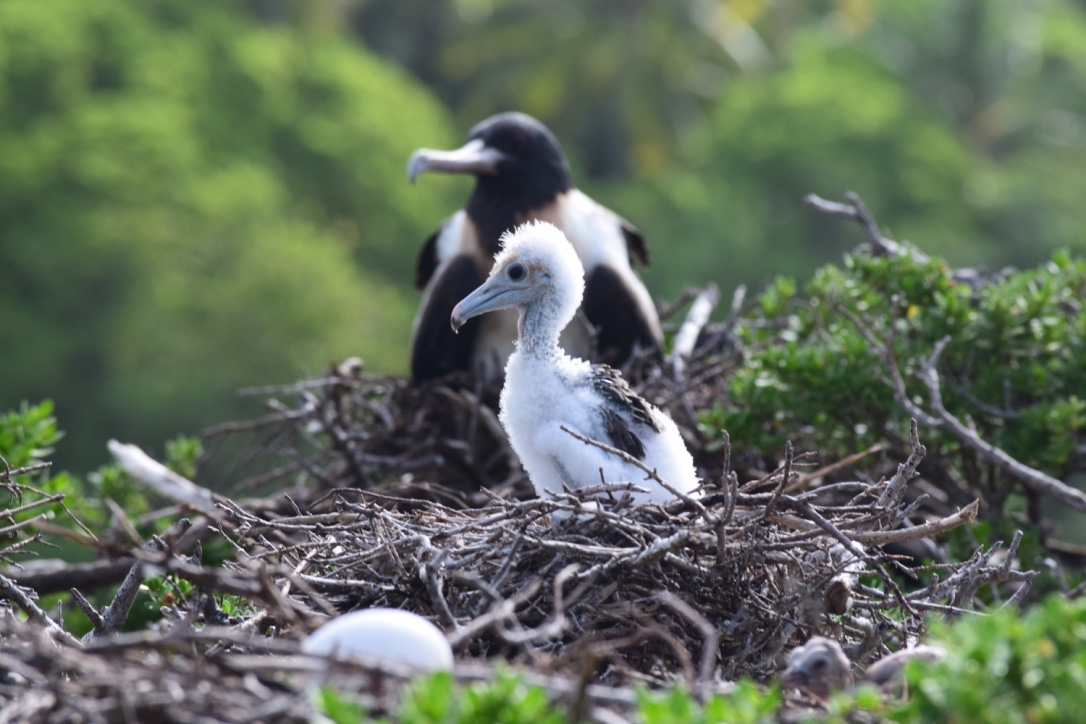
Frigate family in the treetops
Breeding couples of Frigatebirds are mostly located on the northern part of the atoll, where they find optimum conditions to settle the colony. They favor forest of Pemphis or "Miki Miki" in Tahitian for nesting or roosting, and the islets or "motus" of the north are very close to open ocean and suit their pelagic feeding habit. They seem to reproduce every two years because they incubate in turns, with only one egg for fifty-five days and feed their chick for nine months in average. Parental care duration is very long for Frigatebirds.


